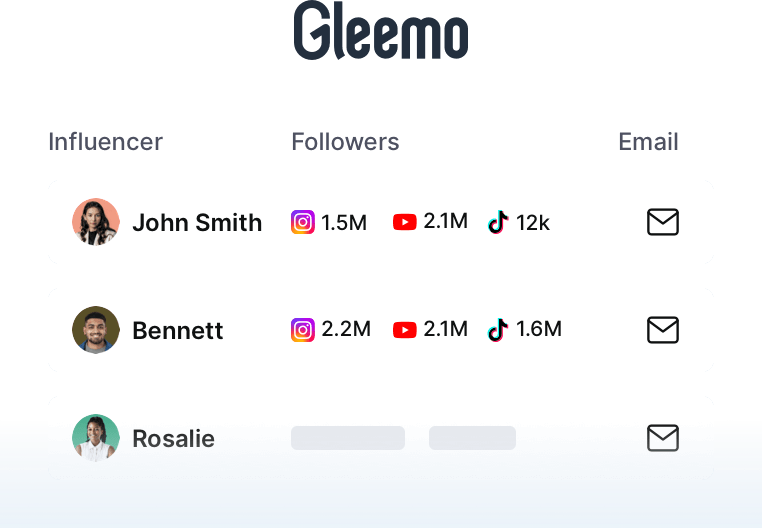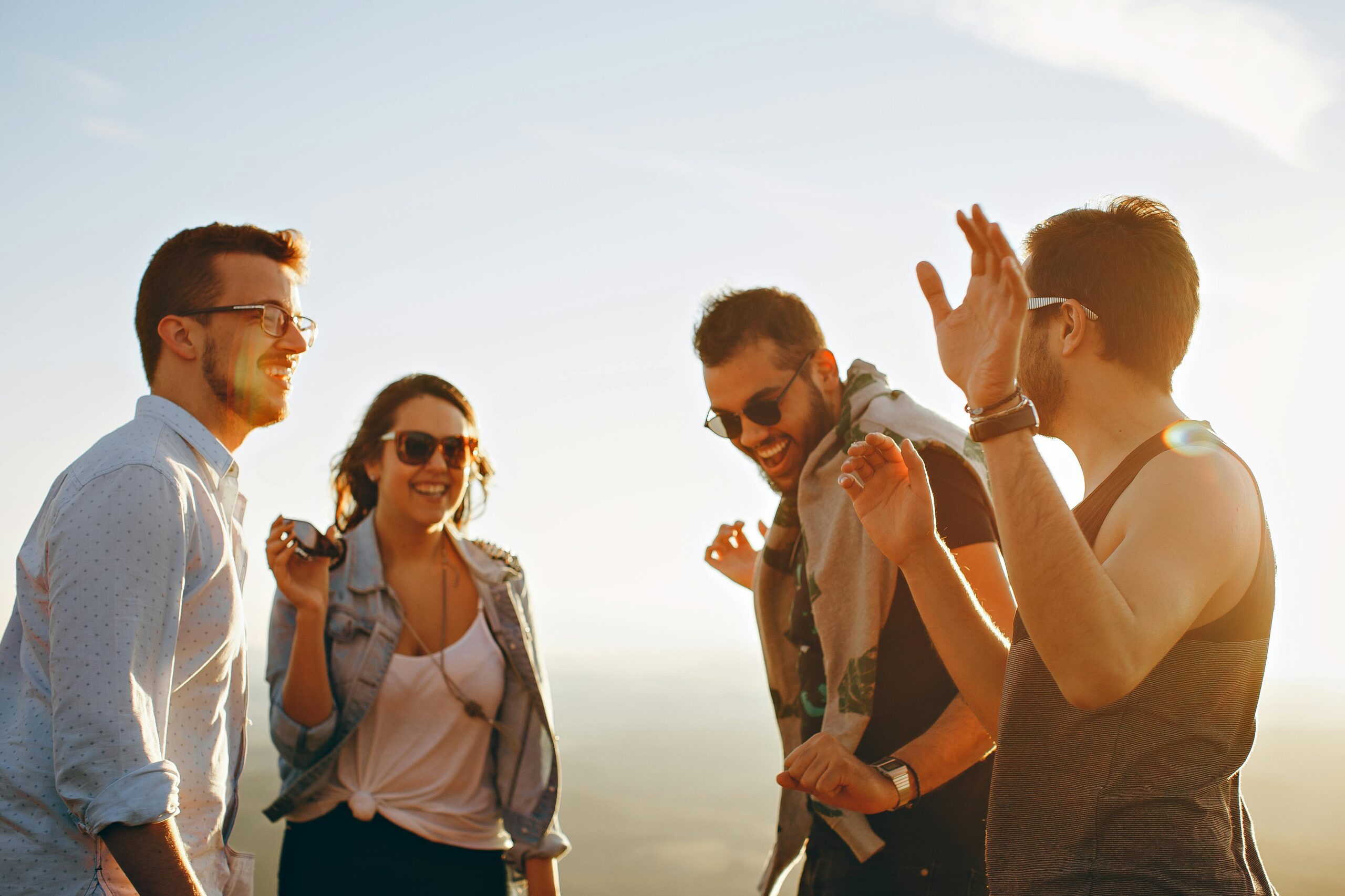TikTok continues to dominate the global social media landscape, and dance challenges remain one of its most viral formats. In 2025, TikTok dance trends are not only shaping pop culture but also creating significant opportunities for brands to engage with younger audiences.
This article explores the latest dance benchmarks, participation data, and actionable strategies for businesses aiming to capitalize on viral challenges.
Why TikTok Dance Challenges Matter in 2025
TikTok dances have transcended their origins as fleeting entertainment to become a cornerstone of digital culture, social interaction, and creative expression. By 2025, their significance lies not in isolated trends or metrics, but in their ability to shape and reflect broader societal, technological, and economic shifts.
1. High Engagement Potential
TikTok dances have proven to be highly engaging content. For example, the “Espresso” dance challenge kicked off by Sabrina Carpenter has seen massive participation. People are not only dancing but also incorporating coffee-inspired makeup and outfits, making the trend visually appealing and fun to watch. This level of engagement can significantly boost a creator’s visibility and a brand’s awareness.
2. Opportunities for Brand Marketing
Brands can leverage popular dances to create marketing campaigns that resonate with TikTok’s audience. The “Renegade” dance, originally created by TikTok user Jalaiah Harmon, became a TikTok challenge for the ages. Celebrities like Millie Bobby Brown and Lizzie joined in, and it’s still popular in 2025. Brands can collaborate with popular dancers or create their own dance challenges to achieve marketing objectives.
3. Opportunities for Collaboration
Challenges provide opportunities for creators to collaborate with each other. The “Silhouette Challenge,” which involves creating a video where one dances or poses in a well-lit room, then cuts to a silhouette effect as the music transitions to a slower beat, has seen many creators teaming up to create stunning visual content.
4. Cross-Platform Influence
TikTok dances often spill over into other platforms and even offline events. The “Cha Cha Slide” dance has made its way to TikTok, with Millennials teaching Gen Z and Gen Alpha the iconic dance.
5. Cultural Relevance and Trendsetting
TikTok dances are a barometer of contemporary pop culture. They often start on the platform and then transcend to other platforms and even offline events. The “APT” dance challenge, a collaboration between ROSÉ from BLACKPINK and Bruno Mars based on a traditional Korean game, quickly went viral. Its catchy choreography and synchronized head movements grabbed attention, and it wasn’t long before fans and creators worldwide put their own spin on it.
Key TikTok Dance Statistics & Trends Interpretation
1. User Coverage
Global Reach
TikTok boasts a massive global user base. As of February 2025, the platform has over 1.2 billion daily active users worldwide. Specifically, in the Asia-Pacific region, there are 1.1 billion users; in North America, 250 million; and in Europe, 200 million. In terms of individual countries, the USA has 135.79 million users, Indonesia 120.5 million, and Brazil 105 million.
Gender Distribution
Globally, TikTok’s user base is approximately 55.7% male and 44.3% female as of February 2025. However, in the United States, about 55% of weekly users are female and 45% are male.
Content Consumption
The average TikTok user spends roughly 95 minutes per day on the app. This high level of engagement highlights the platform’s ability to capture and maintain user attention.
2. Content Productivity
User Content Creation
More than 50% of TikTok users actively upload their own content. This indicates a highly participatory user base where content creation is a key activity.
Viral Potential
TikTok’s algorithm is adept at turning fleeting trends into global movements. For instance, the “Apple dance” challenge, involving choreography aligned with specific lyrics, gained massive participation and views. Charli XCX’s involvement in the challenge garnered over 53.4 million views.
Influencer Impact
Top TikTok Influencers play a significant role in driving dance trends. Charli D’Amelio, with 157 million followers, is one of the most-followed TikTok stars and a key figure in the dance niche.
3. Trends Interpretation
Nostalgic Revival
Nostalgic music and dances are making a comeback. For example, the classic hit “Bye Bye Bye” by NSYNC has resurged in popularity on TikTok, with creators incorporating the track into new dance videos.
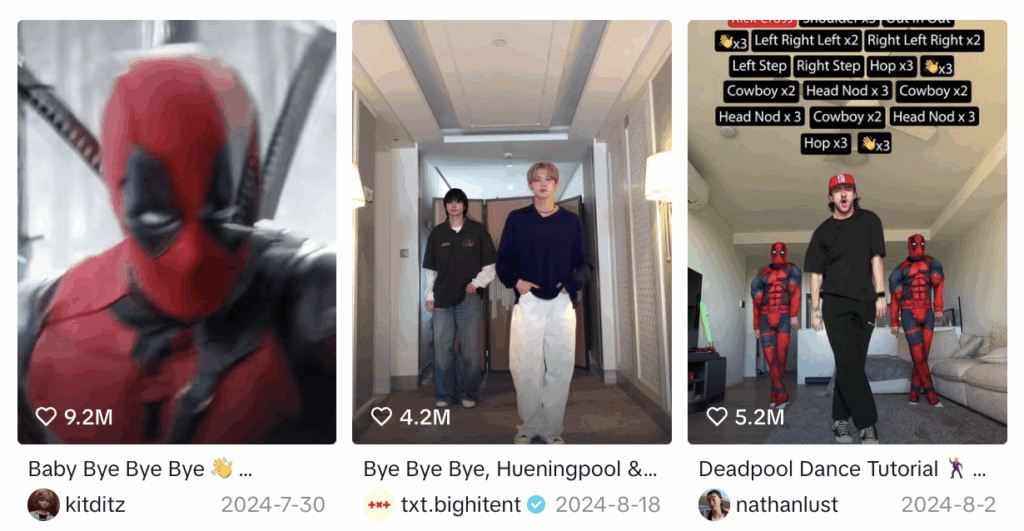
AI Integration
AI technology is being creatively integrated into dance challenges. Challenges like the “AI Twin” challenge, which uses AI face-mapping filters, offer users innovative content creation opportunities.
Collaborative Challenges
Challenges that encourage user interaction and participation are on the rise. The “Pass the Phone – 2.0” challenge, which involves groups of people, fosters a sense of community and engagement.
Brand-Driven Challenges
Brands are leveraging dance challenges for marketing. The “Espresso” dance challenge has seen users incorporating coffee-themed outfits and makeup, providing brands in the fashion and beauty industries with opportunities to highlight their products.
Short and Catchy Choreography
Simple, catchy choreography is more likely to go viral. The “Cha Cha Slide” dance, with its straightforward steps, has become popular across different age groups.
Music-Driven Challenges
Many dance challenges are closely tied to specific songs. The “Adderall (Corvette Corvette)” dance gained massive popularity largely due to the catchy track by Popp Hunna, with the song being used in 19.5 million videos.
Global Participation
TikTok dances often gain popularity worldwide. The platform’s global user base allows dance challenges to spread rapidly across different regions and cultures.
Popular TikTok Dances Influencer Marketing Strategy
TikTok dance challenges are an integral part of the platform’s content ecosystem. Here are some strategies for leveraging TikTok dances in your influencer marketing campaigns:
1. Partner with the Right Influencers
- Niche Selection: Find and choose influencers whose audience aligns with your brand and campaign goals. Even micro-influencers with highly engaged communities can provide significant value.
- Alignment with Brand Values: Ensure that the influencers you partner with align with your brand values. This ensures that the content they create is authentic and resonates with their audience.
- Long-Term Relationships: Invest in long-term partnerships rather than one-off collaborations. Ongoing relationships can lead to sustained growth and deeper audience loyalty.
2. Create Engaging Content
- Challenges and Campaigns: Launch dance challenges that encourage user participation. These challenges should be easy to follow and allow for creativity and personal expression.
- Behind-the-Scenes Content: Provide a glimpse into the creation process of the dance challenge. This can include tutorials, behind-the-scenes footage, and interviews with the choreographer.
- Interactive Content: Utilize TikTok’s features such as Duets, Lives, effects, and polls to keep the content interactive and engaging.
3. Promote the Challenge
- Cross-Platform Promotion: Promote your dance challenge on other social media platforms such as Instagram, Facebook, Twitter, and YouTube. This helps to reach a wider audience.
- Collaborate with Influencers: Invite influencers, celebrities, or other brands with a large following on TikTok to participate in your challenge and share it with their fans.
- Paid Ads: Use paid ads like TikTok’s In-Feed Ads or TopView Ads to boost visibility and exposure. These ads can help to reach a larger audience and increase participation.
4. Measure and Analyze Performance
- Track Metrics: Use TikTok’s analytics tools or influencer marketing tools to track metrics such as views, likes, comments, shares, hashtag usage, and conversions.
- A/B Testing: Experiment with different content formats, budgets, and targeting parameters to understand what works best for your brand. Use TikTok’s built-in analytics to track performance and refine your campaigns.
5. Stay Updated with Trends
- Follow TikTok Trends: Keep an eye on emerging trends and incorporate them into your marketing strategy. TikTok’s algorithm rewards brands that consistently deliver fresh and engaging material.
- Adapt to Changes: Be prepared to adapt your strategy as trends evolve. The fast-paced nature of TikTok means that trends can quickly rise and fall in popularity.
How Popular TikTok Dances Compare to Other Platforms
TikTok dances have become a cultural phenomenon, captivating the attention of millions of users. Below is a comparison of TikTok dances with other platforms:
| Platform | User Participation | Algorithm Influence | Content Diversity | Content Creation Threshold | Brand Collaboration Opportunities |
| TikTok | High. | Strong personalized recommendations. | Wide range of music genres and styles. | Low. Easy to create and share videos with editing tools. | High. Brands effectively leverage dance challenges for marketing. |
| Large user base but lower participation in dance challenges. | Prioritizes followed accounts; less personalized. | More visually oriented with fewer dance challenges. | High. Requires photography and editing skills. | Moderate. Focus on fashion and lifestyle. | |
| YouTube | Large user base but fewer dance challenges. | Prioritizes engagement and watch time. | Diverse but fewer dance challenges. | High. Needs video editing and camera skills. | Moderate. Focus on long-form content. |
| Large user base but fewer dance challenges. | Prioritizes friends and family content. | Diverse but fewer dance challenges. | Low but focuses on interaction over creation. | Moderate. Focus on social interaction. |
TikTok
- User Participation: TikTok dances have a massive user base. For example, the “Renegade” dance has been attempted by over 29.7 million users. Many TikTok dances are easy to learn and adapt, which encourages wide participation.
- Algorithm Influence: TikTok’s algorithm is adept at turning fleeting trends into global movements. It analyzes user behavior, preferences, and interactions to curate personalized content feeds. This keeps users engaged and provides a constant stream of fresh, entertaining videos.
- Content Diversity: TikTok dances cover a wide range of music genres and styles, from pop to hip-hop to electronic music. This diversity allows users to find dances that resonate with their personal tastes.
- Content Creation Threshold: TikTok has a low content creation threshold. Users can easily create and share their own dance videos, and the platform provides a variety of editing tools and effects to enhance creativity.
- Brand Collaboration Opportunities: Brands can leverage popular dances to create marketing campaigns that resonate with TikTok’s audience. The “Espresso” dance challenge has seen users incorporating coffee-themed outfits and makeup, providing brands in the fashion and beauty industries with opportunities to highlight their products.
- User Participation: Instagram’s user base is also large, but dance challenges are not as prevalent as on TikTok. User participation is relatively lower.
- Algorithm Influence: Instagram’s algorithm prioritizes content from accounts users follow and interact with. While it does recommend some trending content, it doesn’t have the same personalized and precise recommendation capabilities as TikTok.
- Content Diversity: Instagram’s content is more visually oriented, with a focus on images and short videos. Dance challenges are relatively fewer and less diverse compared to TikTok.
- Content Creation Threshold: Instagram has a relatively high content creation threshold. Users need to have some photography and editing skills to create visually appealing content.
- Brand Collaboration Opportunities: Brands can collaborate with influencers on Instagram to promote products through dance challenges. However, the platform’s user base is more focused on fashion and lifestyle, so dance challenges may not be as effective as on TikTok.
YouTube
- User Participation: YouTube‘s user base is also large, but dance challenges are not as popular as on TikTok. User participation is relatively lower.
- Algorithm Influence: YouTube’s algorithm prioritizes content with high engagement and watch time. While it does recommend some trending content, it doesn’t have the same personalized and precise recommendation capabilities as TikTok.
- Content Diversity: YouTube’s content is diverse, covering a wide range of topics such as music, movies, and education. Dance challenges are relatively fewer and less diverse compared to TikTok.
- Content Creation Threshold: YouTube has a relatively high content creation threshold. Users need to have some video editing and camera operation skills to create high-quality content.
- Brand Collaboration Opportunities: Brands can collaborate with YouTubers to promote products through dance challenges. However, the platform’s user base is more focused on long-form content, so dance challenges may not be as effective as on TikTok.
- User Participation: Facebook’s user base is large, but dance challenges are not as popular as on TikTok. User participation is relatively lower.
- Algorithm Influence: Facebook’s algorithm prioritizes content from friends and family. While it does recommend some trending content, it doesn’t have the same personalized and precise recommendation capabilities as TikTok.
- Content Diversity: Facebook’s content is diverse, covering a wide range of topics such as news, events, and groups. Dance challenges are relatively fewer and less diverse compared to TikTok.
- Content Creation Threshold: Facebook has a relatively low content creation threshold. Users can easily create and share their own dance videos. However, the platform’s focus is more on social interaction rather than content creation.
- Brand Collaboration Opportunities: Brands can collaborate with Facebook users to promote products through dance challenges. However, the platform’s user base is more focused on social interaction, so dance challenges may not be as effective as on TikTok.
In summary, TikTok dances have a significant advantage over other platforms in terms of user participation, algorithm influence, content diversity, content creation threshold, and brand collaboration opportunities. However, each platform has its unique features and user base. Brands and creators should choose the appropriate platform based on their goals and target audience.
Challenges & Opportunities in Popular TikTok Dances
While popular TikTok dances offer immense opportunities for engagement, creativity, and brand promotion, they also come with challenges that require careful navigation.
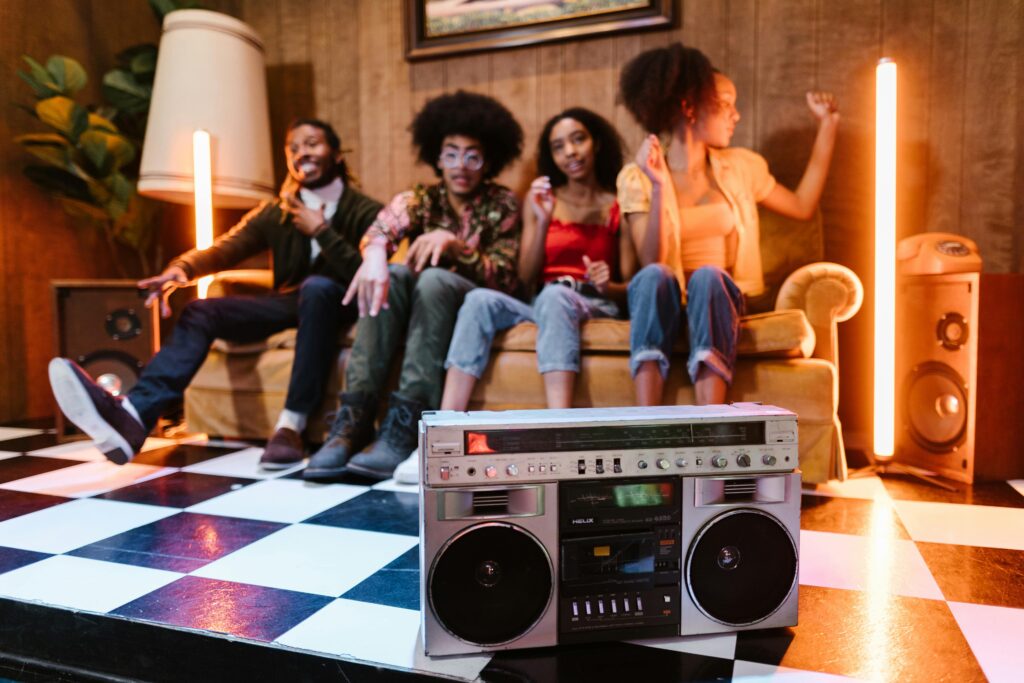
Challenges
- Intense Competition: The massive user base and low content creation threshold on TikTok lead to fierce competition. New dance challenges emerge daily, making it hard for creators and brands to stand out.
- Content Authenticity: With the rise of TikTok dances, inauthentic content and fake followers are becoming problems. This can undermine the credibility of dance challenges and affect audience trust.
- Brand Fit: Aligning dance challenges with brand values is crucial but challenging. Brands must carefully select suitable dance styles and music to ensure alignment with their image, or risk backlash.
- Content Moderation: The large volume of dance-related content requires platforms to enhance moderation. Offensive or inappropriate content must be promptly identified and addressed to protect users.
- Cultural Sensitivity: TikTok’s global user base leads to cultural differences. Dance challenges must respect diverse cultures to avoid cultural appropriation or misunderstandings.
Opportunities
- AI-Driven Content Innovation: AI tools can analyze trends and user preferences, providing creators with inspiration and ideas. They can also assist in choreography and video editing, improving content quality and creativity.
- Enhanced Brand Exposure: TikTok dances offer brands a unique marketing avenue. By collaborating with popular dancers or creating custom challenges, brands can increase visibility and engagement, effectively reaching a wider audience.
- Data-Driven Strategies: Advanced analytics enable precise measurement of dance challenge performance. Creators and brands can use data to refine content and marketing strategies for better results.
- Community Building: Dance challenges foster community interaction and collaboration. They can strengthen connections between users and brands, building brand loyalty.
- Cross-Platform Promotion: TikTok dances can be promoted across multiple platforms to expand reach and influence. This helps attract a broader audience and enhances brand visibility.
Future Outlook: What’s Next for Popular TikTok Dances
Looking ahead, popular TikTok dances are likely to:
- Incorporate New Technologies: Features like augmented reality (AR) effects may become more integrated into dance challenges.
- Expand Globally: As TikTok’s global user base grows, dance challenges may incorporate more diverse cultural elements.
- Enhance Brand Collaborations: Brands will continue to find innovative ways to collaborate with dance creators to achieve marketing objectives.
Conclusion & Key Takeaways
Popular TikTok dances are more than just a passing fad; they represent a significant aspect of how content is created, shared, and enjoyed on the platform. For brands and creators, understanding and leveraging these dances can lead to meaningful engagement and success on TikTok. As the platform continues to evolve, so too will the dance challenges, presenting new opportunities for creativity and connection.
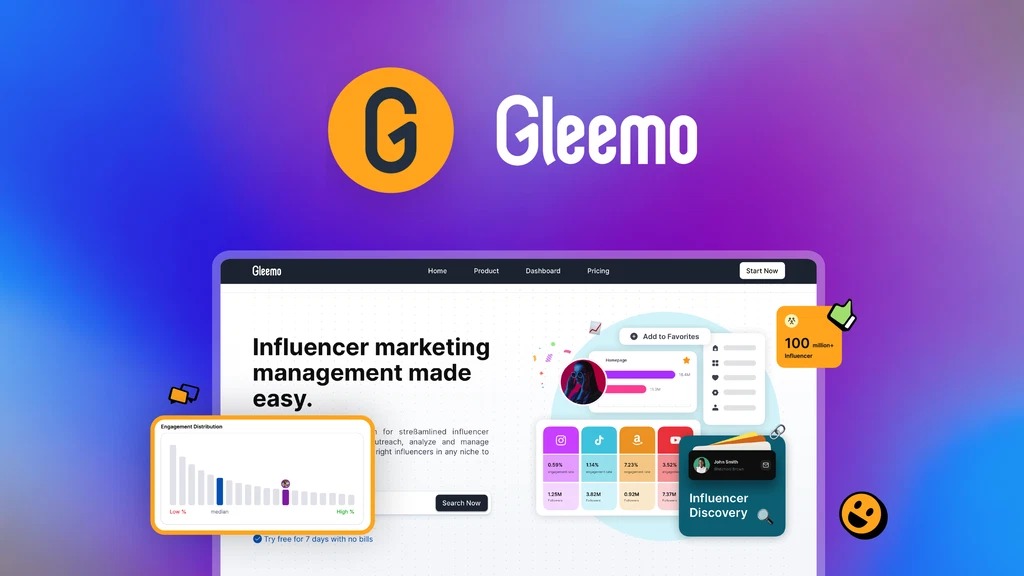
Gleemo, an influencer management platform, can assist brands and creators in navigating the dynamic landscape of TikTok dances. Visit Gleemo now to learn more about how our platform can assist you!
FAQs
How can brands effectively integrate into TikTok dance challenges?
Brands can integrate effectively by creating custom dances that align with their brand image, collaborating with popular dancers, and encouraging user participation through incentives.
What makes a TikTok dance go challenge viral?
A combination of factors including catchy music, simple and memorable choreography, and the ability to resonate with a wide audience can make a dance challenge go viral.
Are TikTok dance challenges suitable for all age groups?
Many TikTok dance challenges are family-friendly and suitable for all age groups, though content can vary, so it’s important for users to be mindful of the content they engage with.
How long do TikTok dance trends usually last?
Most challenges peak within 1–2 weeks, though some extend longer if supported by influencers and brand collaborations.
